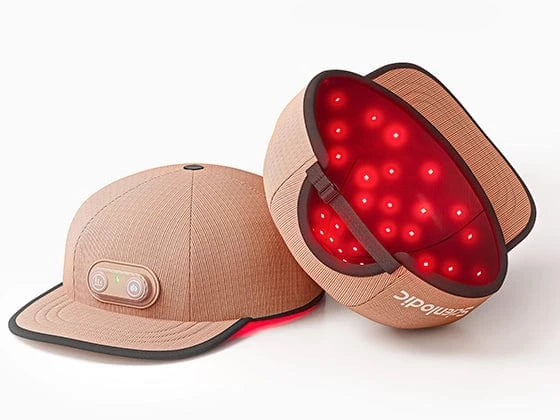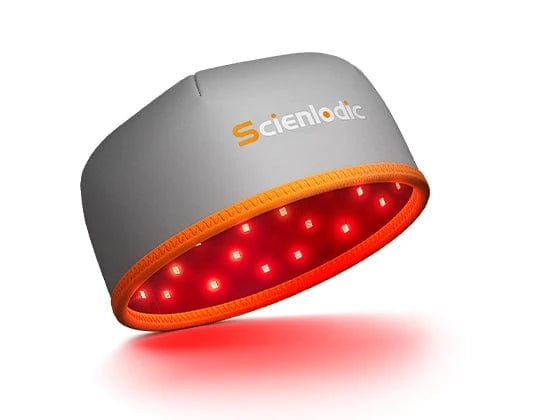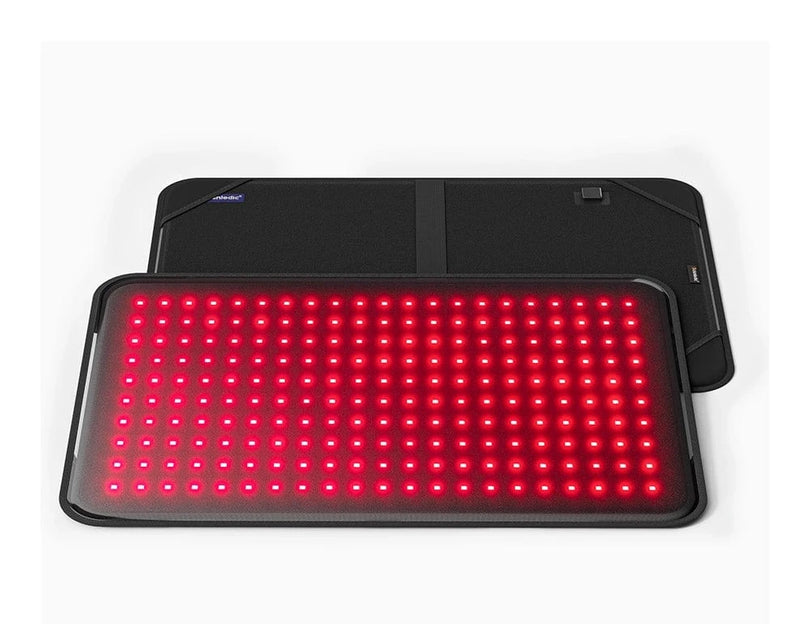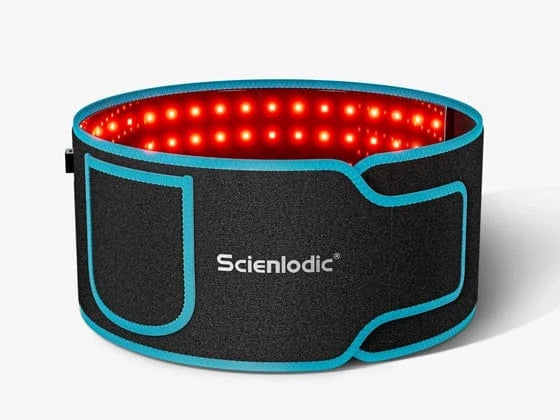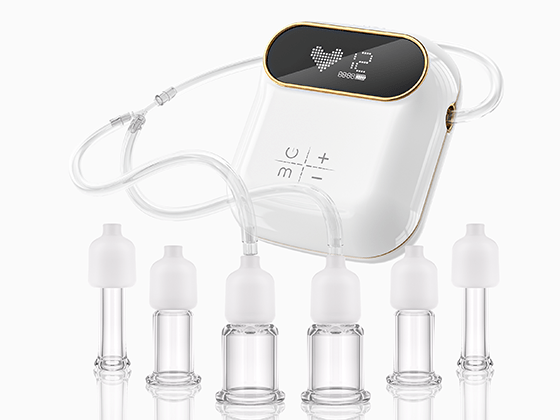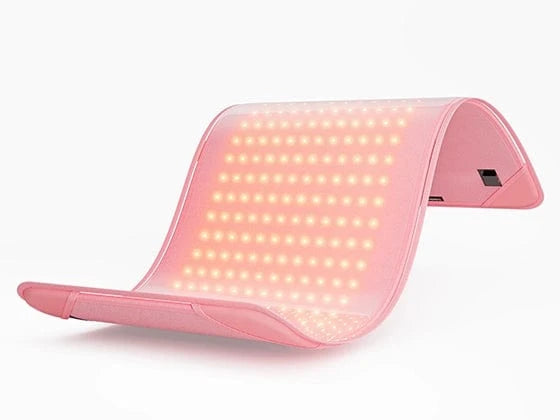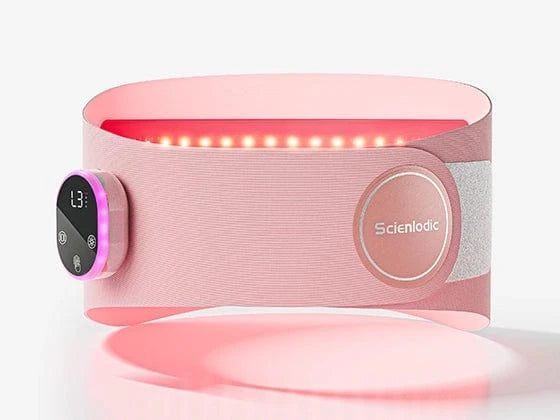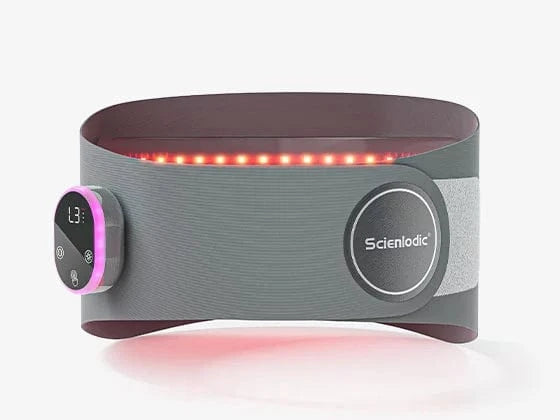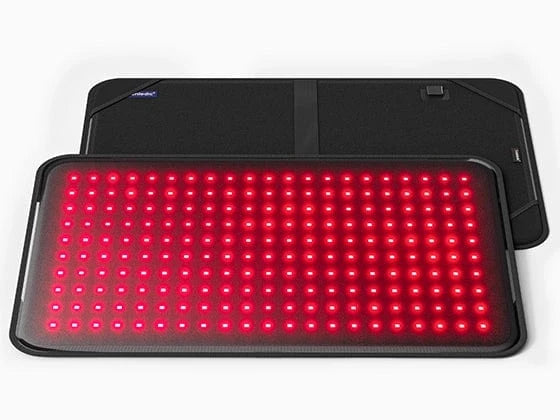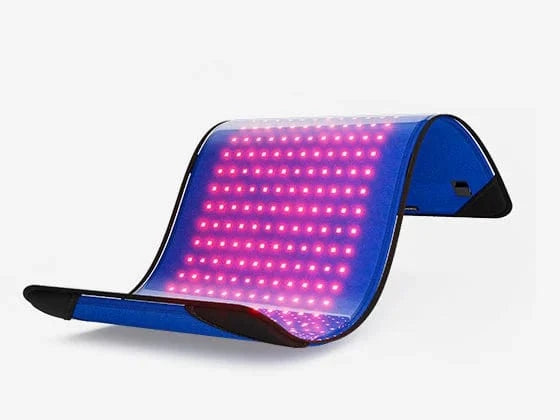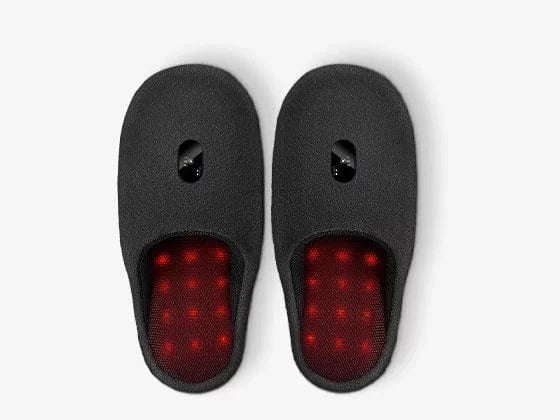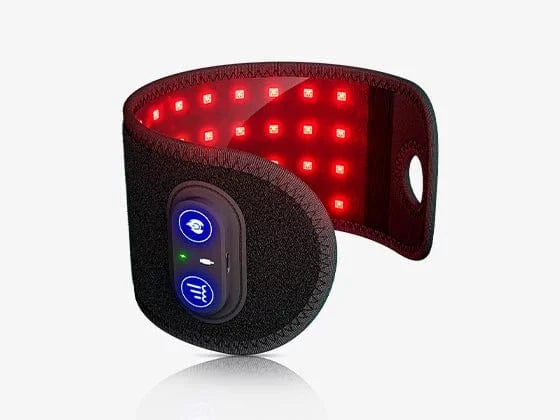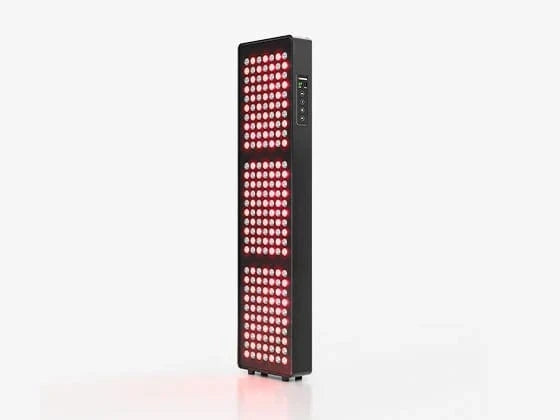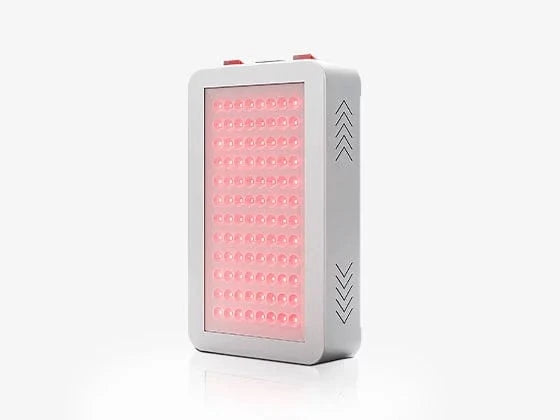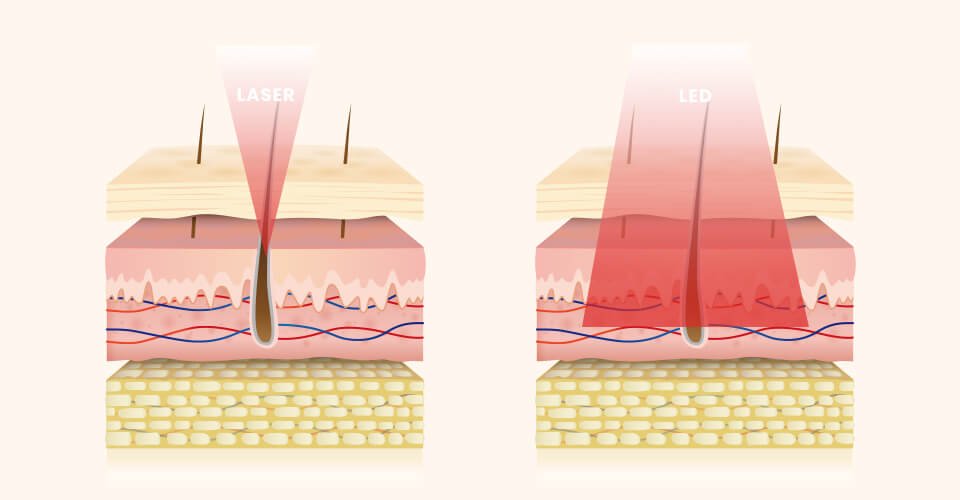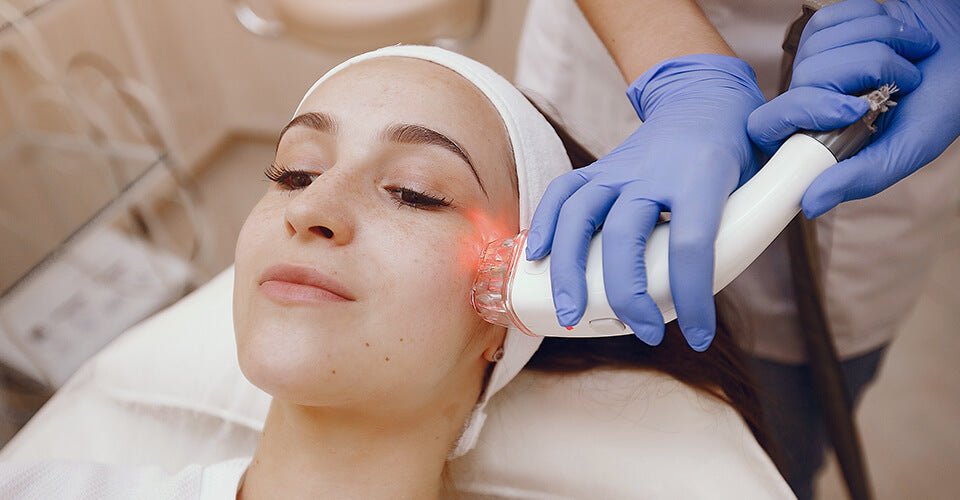Nowadays, red light therapy is getting popular due to its effective health results without any side effects. LED-powered red light devices make red light treatment safer and more effective. Nevertheless, these devices were sometimes different in the past than they are at present. Let's look at how red light therapy has evolved over the years.

Red Light Therapy History
The history of red light therapy will get you back to the year 1666 when a young scientist named Issac Newton was changing the fate of scientific fields. Among his other remarkable discoveries, one noteworthy search was about optics (the field of physics dealing with characteristics of light).
He discovered that light from the sun divides further into different wavelengths, and each wavelength has specific properties on the base of red light therapy. After about two centuries after Newton's discovery, the first electric bulb was invented, thus showing advancement in the field of optics.
In 1893, the first use of red light therapy in medical sciences was made when Nobel Laureate and Danish physician Dr. Niels Ryberg Finsen got positive results from treating smallpox using red light. After two years, they used the same method for curing lupus and remained successful.
Ryberg Finsen further normalized red light therapy by alleviating the symptoms of his disorder named Pick’s disease with sunlight. After this, many healthcare professionals started using red lights to treat several disorders.
In 1917, Albert Einstein made using light in medicines more common by discovering the modern laser. Due to the change in wavelength, that laser was not true red light therapy, but still, many fields of medicine were utilizing it vigorously.
Hungarian physician Endre Mester invented the first low-level laser therapy. First, he used LLLT to treat skin cancer. Later, the same method was used by him for treating wounds and promoting healing.
At the same time, it was discovered that sunlight having red light with the light of other wavelengths was quite helpful in treating tuberculosis (TB). It has been stated that institutions utilizing this type of light therapy have been able to achieve better results than those going with conventional treatments.
The discovery of the synthesis of vitamin D with the help of sunlight in 1935 made another achievement in using light in the medicinal field. The importance of different effects of different wavelengths of light was also discovered when doctors came to know that it is ultraviolet light with a specific wavelength that stimulates the production of vitamin D.
After a few decades, it was observed that babies exposed to sunlight are at less risk of developing jaundice. Doctors observed that high bilirubin levels causing jaundice could be treated with light. In the 1950s, artificial light was used to treat jaundice efficiently.
Scientists began isolating different light wavelengths as the light was discovered to have effective healing properties. With this advancement, the use of laser for therapy decreases over time and is replaced by LED. Let’s look at how LED has taken the place of the laser.
How does It change From Laser To LED?
In the 1990s, some advancements in LED made it easier and cheaper to produce. Unlike laser, LED can cover more areas of the body, allowing light to penetrate the whole body and have its effect.
Having a consistent wavelength, LED offers effective red light therapy and prevents skin damage that can be caused due to use of a laser. In addition to red light therapy, blue and green therapy using LEDs are also widely used to cure various disorders such as migraines.
Further, LEDs can produce light of a single wavelength instead of many wavelengths, which makes their work more effective. At first, LEDs only emitted red light, but with new advancements, LEDs became able to emit light of a wide range of wavelengths.
As LEDs have become more cost-effective and practical, they can be used in medical applications and compete with traditional lasers on a wide scale. Today, lighting is dominated by LEDs, which are far more efficient than incandescent and halogen bulbs.
Currently, LED light therapy devices are intended for consumers that emit blue, amber, red, and near-infrared light, either separately or in combination. Colors other than blue or red light were also explored for treatment but were unsuccessful.
Today’s Red Light Therapy
Red light therapy today is known as “PhotoBioModulation” (PBM). Light therapy was originally called low-level laser therapy or LLLT, but this term has changed over the last half-century. The term "photobiomodulation" was adopted by international agreement in 2016 instead of "low-level laser therapy" and "LLLT".
Firstly, nobody was able to understand what “low-level” actually meant. Secondly, the term “laser” was not appropriate as it was incompatible because LED was rapidly taking over the place of the laser.
You can say that the term "low-level" was subjective, and now we know that LEDs can work equally well as lasers. Additionally, PBM can have both inhibitory and stimulatory effects due to its biphasic dose response, even with the same wavelengths at higher energy densities.
The effectiveness and benefits of red light therapy have led to its use for various functions. Anyone can undergo red light therapy at a nearby clinic by scheduling an appointment. With advancing technology, red light therapy is now available at home. With the red light therapy devices offered by several sites, a person can comfortably undergo red light therapy with effective recovery.
Benefits of LED Red Light Therapy
In the previous section, we mentioned that LED was replacing laser in the field of red light therapy. There must be something to account for this change. Well, LED RLT does have some advantages over the traditional laser one.
1. LED red light therapy costs much less.
Let’s go through the concept of how the laser works. The laser emits concentrated light energy to get things done. Highly sophisticated components are a must, which leads to a complex manufacturing process. That’s precisely the reason why laser devices are more expensive. Few people can afford the price of laser RLT devices. And it is not worth the money when you are not doing business out of it.
On the contrary, LED devices are easier to produce, which makes their price much more reasonable. It usually costs $80-$5,000 for home red light therapy device using LEDs. It truly brings red light therapy to our home, isn’t it?
Labor cost is the other part of the total fee here. Laser RLT obviously can only be done at hospitals or clinics with medical conditions. So you are not only paying to use their facility but also for the doctors’ or nurses’ service which is a pay-per-treatment kind of thing.
In contrast, the red light therapy LED device has an apparent advantage, given that you only need to pay once for the machine itself. One-time payment for the product and you can enjoy red light therapy at home anytime you want.
Either you can have the clinics take $25-$250 from your account each time before treatment, or you can spend $80-$5,000 for unlimited access to treatment. It’s up to you.
2. LED red light therapy is a safer choice for home treatment.
We all know that the energy from the laser is higher. Such intensive treatment can only be performed by professionals, or else some problems will arise with regard to skin burning.
Red light from LEDs is mild yet powerful. LEDs carry less energy than lasers, which lessens irritation to the skin. Indeed, it might take a little longer than laser therapy to see the results, but safety comes first for home red light therapy. It's an assuasive way for wound healing, acne treatment and anti-inflammatory. As long as you follow the instructions, there is no need to worry about hurting.
3. LED red light therapy is as effective as laser RLT.
Someone might wonder if LED is less effective than traditional laser RLT. We can give you a sure answer: no, it is nothing like that.
Let’s get back to the mechanism of how RLT works. Exposure to red light can create a biochemical reaction in your body, producing good proteins like collagen and elastin. Red light solves the undiscovered deep problems. As a result, you are healthier.
The key factor here is absorption. How much red light “nutrients” does your body take in? Imagine this process as eating and digesting. Either you can have all the food at one meal, or you can eat frequent meals. A step-by-step approach is clearly better for nutrient absorption. Don’t worry. If you have the same accumulated dose, you can gain the same results as the laser does. It’s still worth it to get to the destination a little later with the promise of a safe trip.
4. LED red light therapy makes treatments easier than ever.
Generally, one laser device can only emit one particular wavelength, while LEDs can emit a wide range of wavelengths. Red light therapy uses multiple wavelengths to achieve different goals like promoting hair growth, improving mood or building muscles. So it will be much harder to do RLT with the lasers than with LEDs if you want all these red light benefits. After all, there is no such thing as easy control modes on laser devices.
Plus, as we said before, laser therapy needs professional training, whereas LED red light therapy only needs you to follow the easy-to-understand instructions provided by the manufacturers. Normally, you turn it on, select a mode and expose your body to red and infrared light. It’s a piece of cake for everyone to take red light LED therapy.
How To Use Red Light Therapy At Home?
No one wants to go to a clinic for red light therapy in their busy daily routine. People can now receive red light therapy at home without going out of their comfort zones. There is no use of ultraviolet radiation in red light therapy. Therefore, red light therapy is considered safe and can be experienced at home using portable therapy devices.
These therapy devices can easily be purchased in nearby shops or online from several websites. Among these various sites, Scienlodic offers various kinds of best red light therapy devices at reasonable prices. Let's look at Scienlodic's devices and how they can be used.
- Scienlodic Red Light Therapy Panels: We offer full-body red light therapy at home with efficient results. Covering the whole body, large panels offer various health benefits, including relieving pain, reviving skin vitality, boosting oxygen supply to cells, and improving hair growth and weight loss. Unlike other modular therapy panels, Scienlodic red light therapy panels can easily be used with a single installation.
- Scienlodic Red Light Therapy Hair Regrowth Hat: It offers efficient treatment to regain lost hair. A healthier scalp can be achieved by using this hat to enhance blood circulation.
- Scienlodic Red Light Therapy Pad: You can use these therapy pads on any part of the body, including the knees, arms, legs, and shoulders. They are perfectly safe for the skin as well as provide an efficient light effect without skin burning.
- Scienlodic Red Light Therapy Wrap: These wraps provide red light therapy without disturbing your daily activities. Several health benefits can be achieved comfortably by wearing these wraps easily. A specific temperature limit and period are set for the wraps to prevent skin burning.
- Scienlodic Light Therapy Torch: With this small, energetic, and multi-purpose light therapy torch, you can enjoy daily red light therapy without missing a single treatment. This torch also provides specific functions for maintaining healthy skin.
Advice of using red light therapy
While using any of the above-mentioned red light therapy devices, you must be aware of the below-mentioned precautions.
- Select red light therapy device according to your targeted treatment. Handheld, such as a red light torch or other small standing devices, is the best option when looking for a treatment for hair growth, healing, pain reduction, and recovery of damaged tissues.
Full-body red therapy panels are preferred for boosting muscle recovery and weight loss. They also reduce pain and inflammation in the body.
- A safe distance is needed when using standing red light therapy devices. It does not mean that red light can generally cause damage to the skin, but still standing therapy devices can overheat and burn the skin.
To treat deep tissue and muscles, you should sit 4-6 inches away from your device, while to treat surface-level skin concerns, you should sit 12-36 inches or 30-91 cm away.
- Always wear eye protection devices to prevent any possible damage from red lights. Although it is free of ultraviolet radiation, precautions are still needed. When it comes to skin, you can go for red light therapy as it does not cause any damage to the skin.
- Avoid covering the body part when going for red light therapy. It is because the red light cannot pass through the clothes. Hence its efficient results cannot be produced.
- Don’t use any kind of sunscreen or cosmetic products containing SPF. They will reduce the effectiveness of red light therapy. However, you can use these products once completing your red light treatment earlier in the morning.
As you now know all about red light therapy, you can go for your red light treatment by getting any required device from Scinelodic and enjoy it from home.
Reference article:https://pubmed.ncbi.nlm.nih.gov/28987080/
https://www.ncbi.nlm.nih.gov/pmc/articles/PMC4126803/
https://onlinelibrary.wiley.com/doi/10.1111/php.12864

